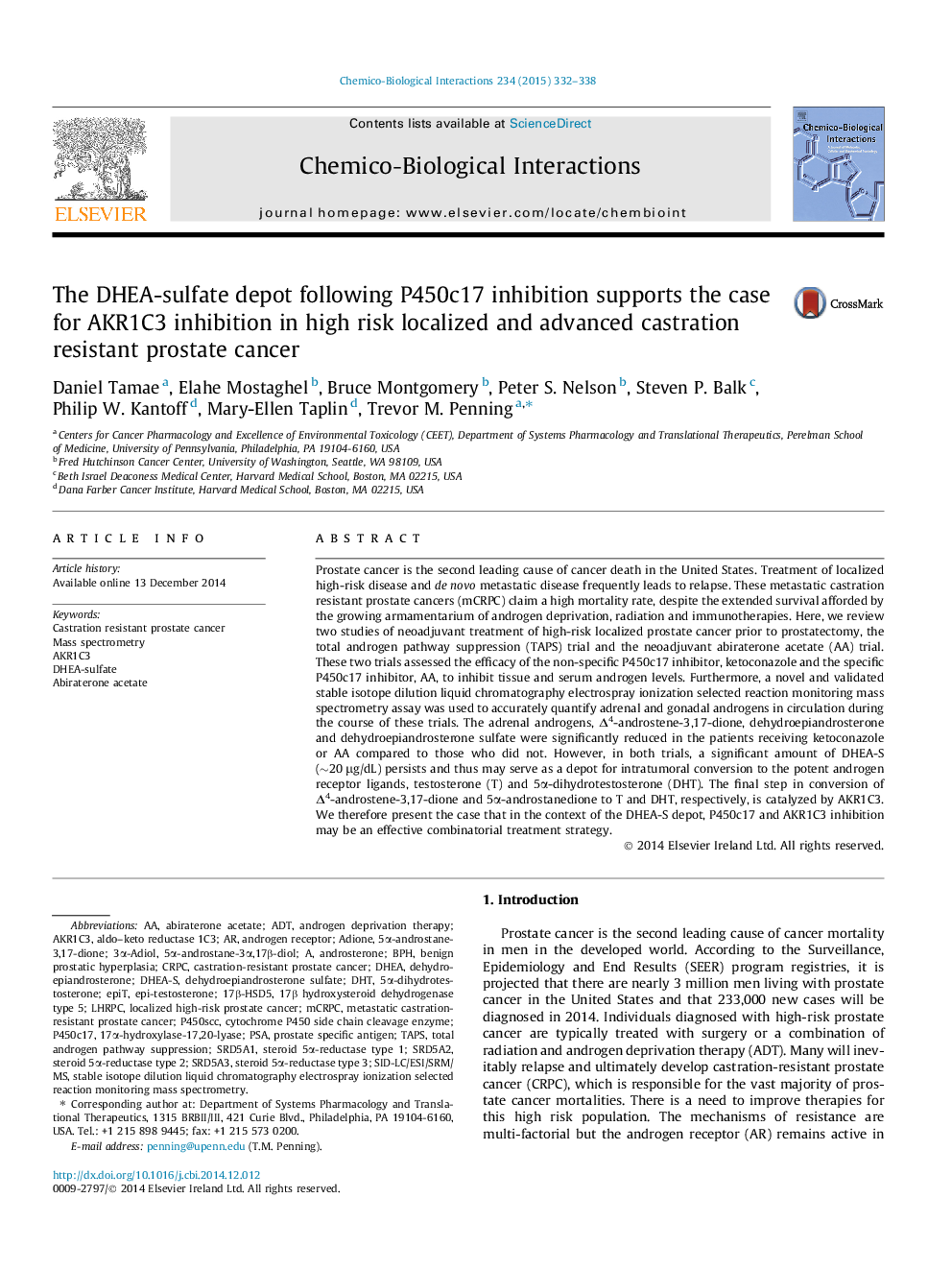| کد مقاله | کد نشریه | سال انتشار | مقاله انگلیسی | نسخه تمام متن |
|---|---|---|---|---|
| 2580252 | 1561607 | 2015 | 7 صفحه PDF | دانلود رایگان |

• Androgen deprivation therapy (ADT) is a mainstay in advanced prostate cancer treatment.
• Total androgen pathway suppression and abiraterone neoadjuvant clinical trials were compared.
• P450c17 inhibition reduced serum Δ4-AD, DHEA and DHEA-S, in addition to T and DHT.
• A depot of DHEA-S remains and may facilitate intratumoral androgen conversion.
• In CYP17A1 refractory tumors, AKR1C3 inhibitors are a promising strategy.
Prostate cancer is the second leading cause of cancer death in the United States. Treatment of localized high-risk disease and de novo metastatic disease frequently leads to relapse. These metastatic castration resistant prostate cancers (mCRPC) claim a high mortality rate, despite the extended survival afforded by the growing armamentarium of androgen deprivation, radiation and immunotherapies. Here, we review two studies of neoadjuvant treatment of high-risk localized prostate cancer prior to prostatectomy, the total androgen pathway suppression (TAPS) trial and the neoadjuvant abiraterone acetate (AA) trial. These two trials assessed the efficacy of the non-specific P450c17 inhibitor, ketoconazole and the specific P450c17 inhibitor, AA, to inhibit tissue and serum androgen levels. Furthermore, a novel and validated stable isotope dilution liquid chromatography electrospray ionization selected reaction monitoring mass spectrometry assay was used to accurately quantify adrenal and gonadal androgens in circulation during the course of these trials. The adrenal androgens, Δ4-androstene-3,17-dione, dehydroepiandrosterone and dehydroepiandrosterone sulfate were significantly reduced in the patients receiving ketoconazole or AA compared to those who did not. However, in both trials, a significant amount of DHEA-S (∼20 μg/dL) persists and thus may serve as a depot for intratumoral conversion to the potent androgen receptor ligands, testosterone (T) and 5α-dihydrotestosterone (DHT). The final step in conversion of Δ4-androstene-3,17-dione and 5α-androstanedione to T and DHT, respectively, is catalyzed by AKR1C3. We therefore present the case that in the context of the DHEA-S depot, P450c17 and AKR1C3 inhibition may be an effective combinatorial treatment strategy.
Figure optionsDownload as PowerPoint slide
Journal: Chemico-Biological Interactions - Volume 234, 5 June 2015, Pages 332–338